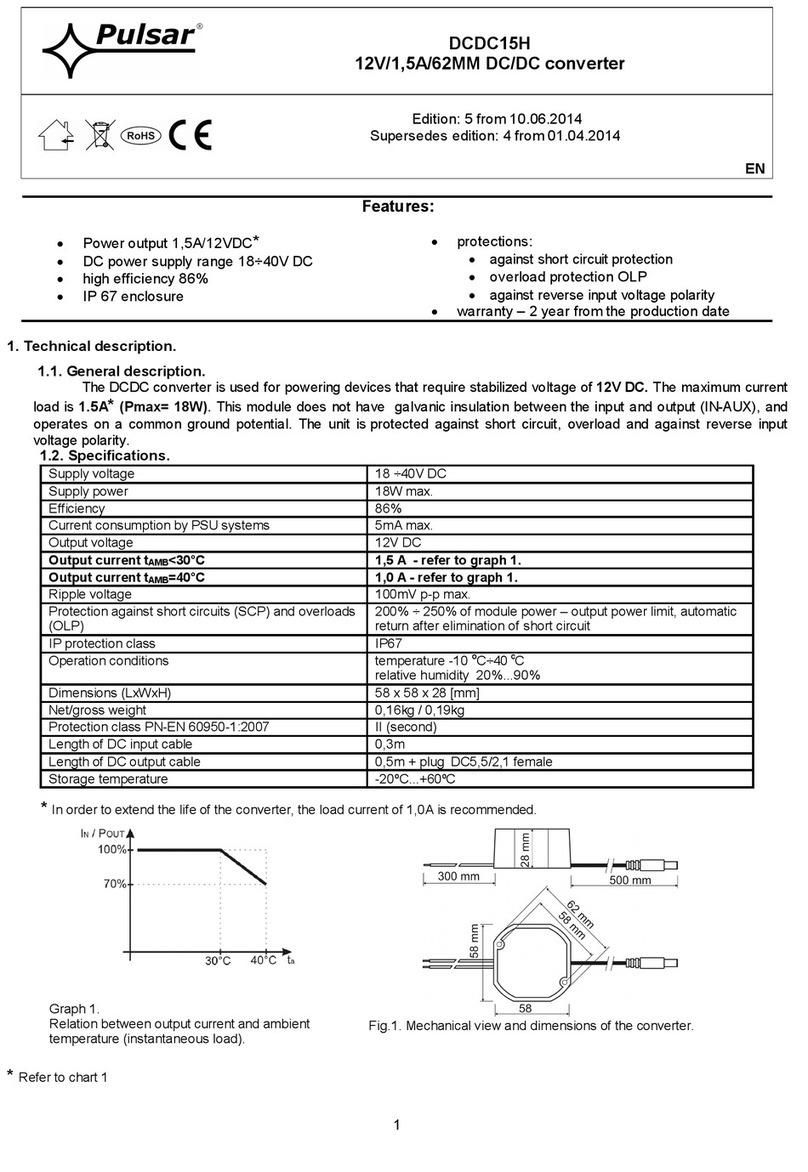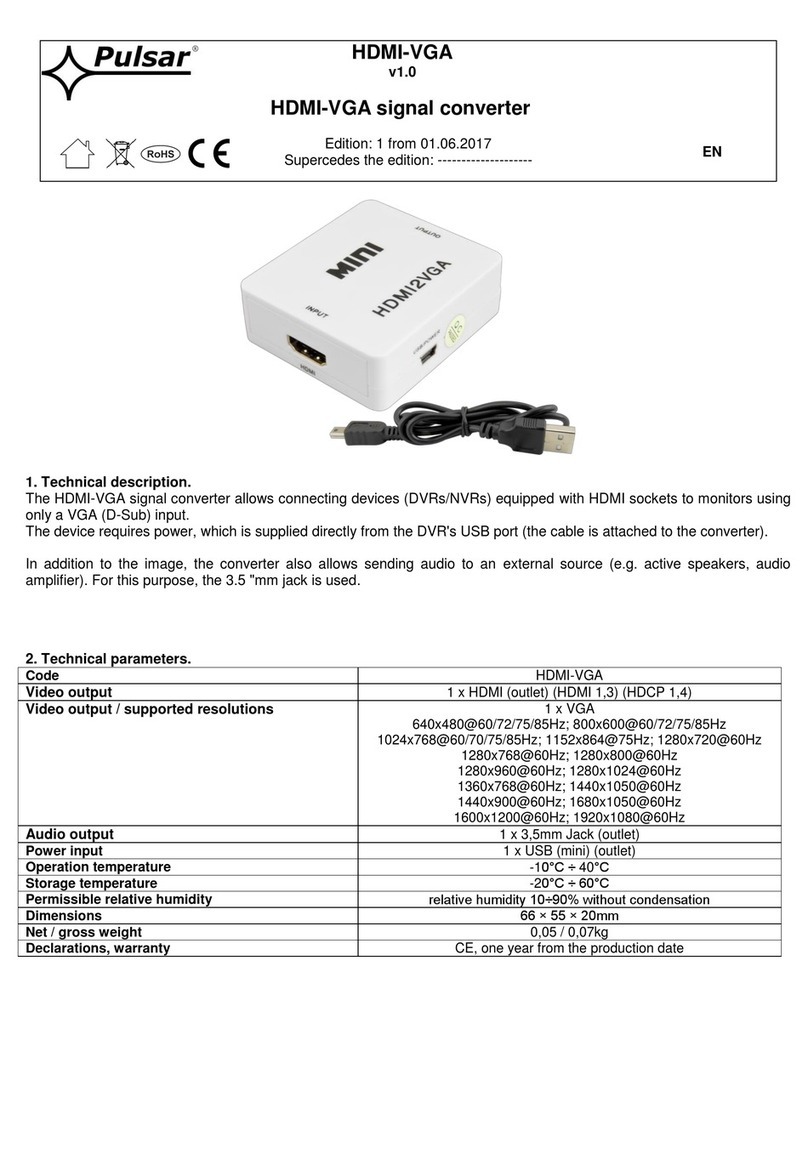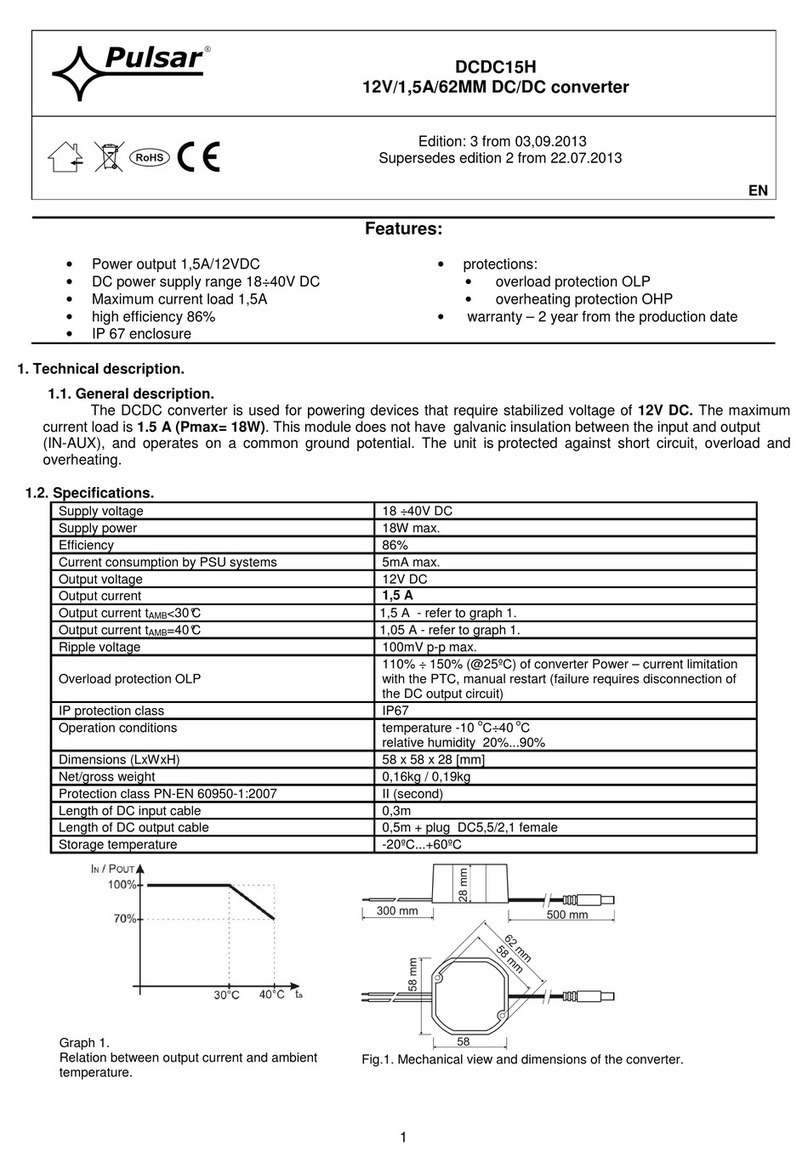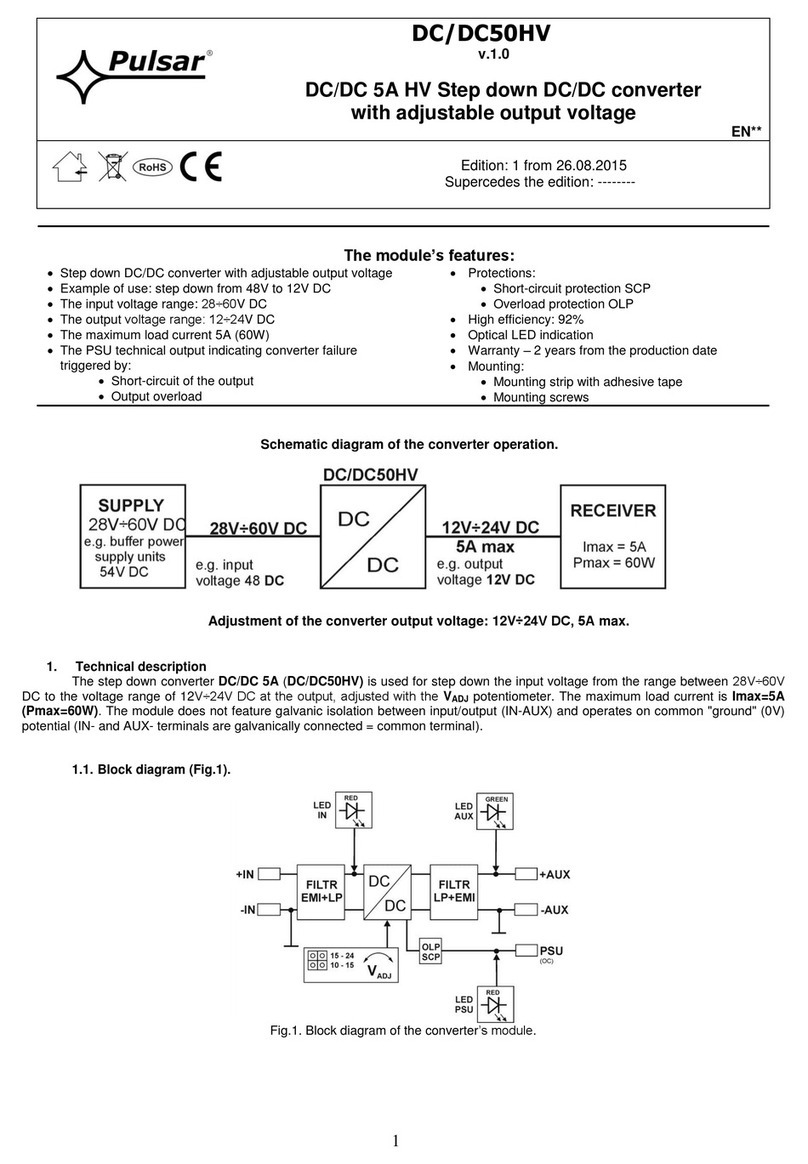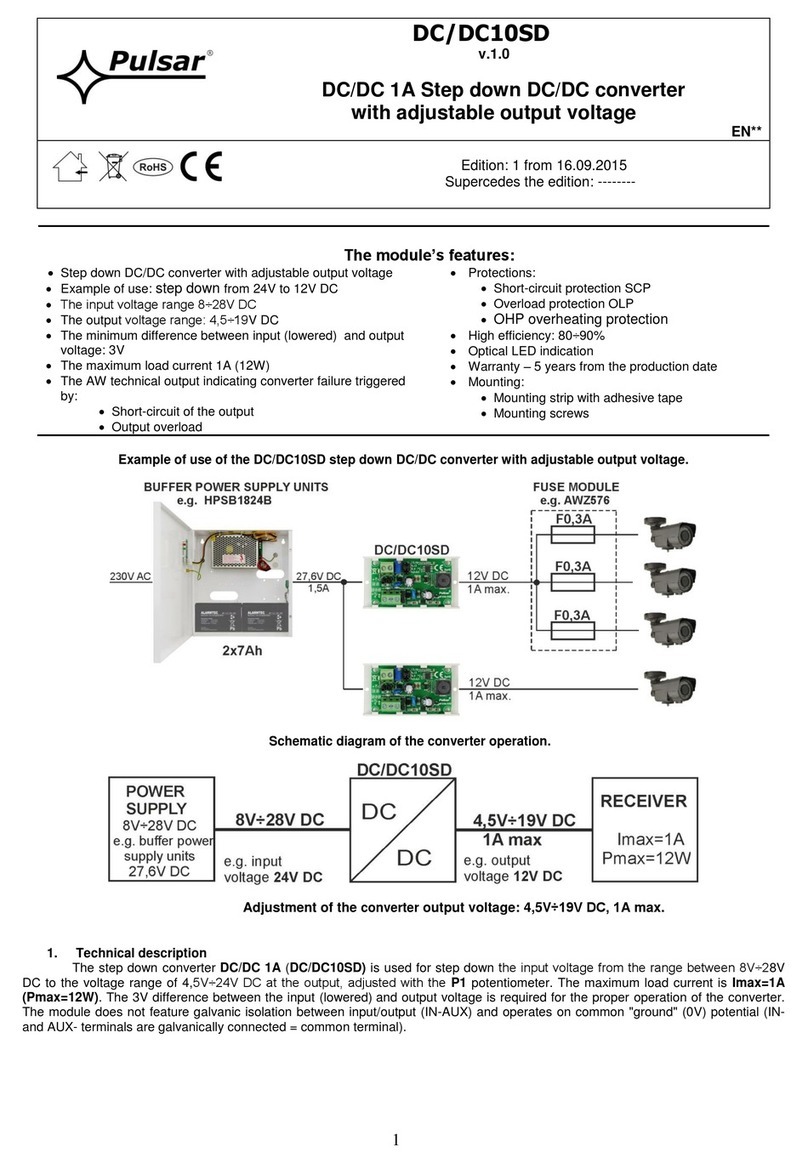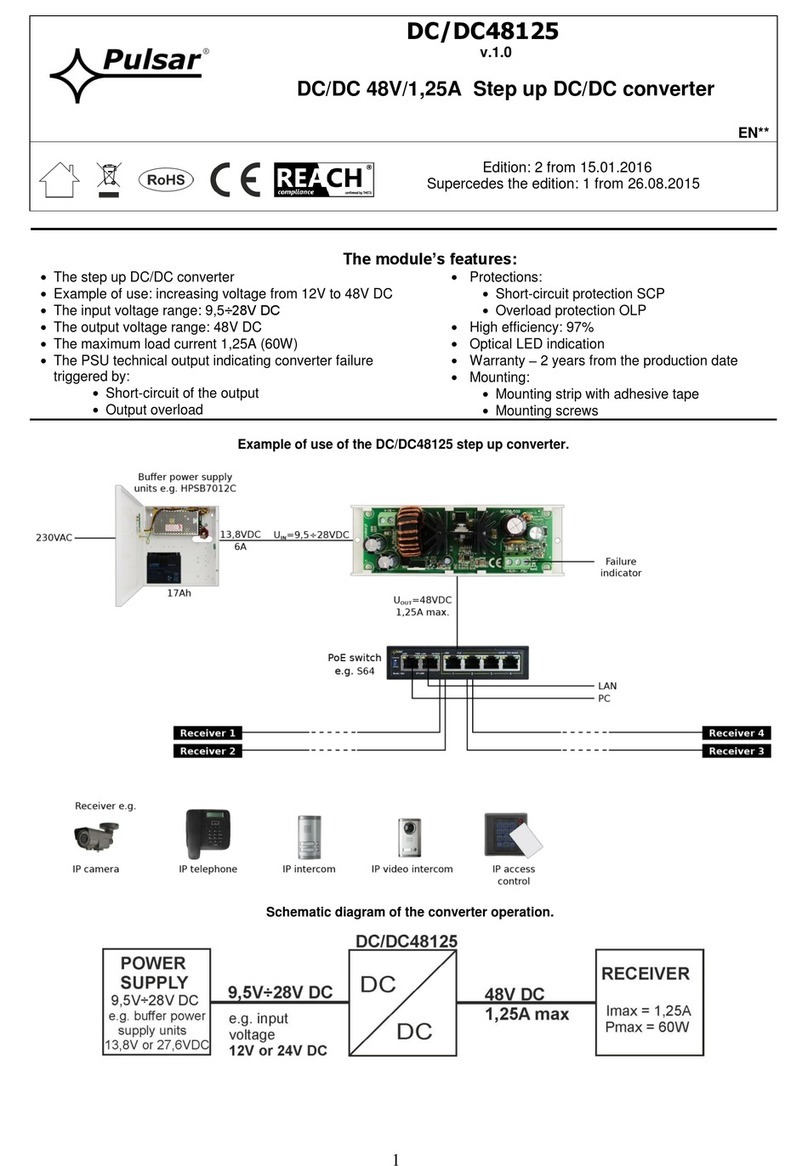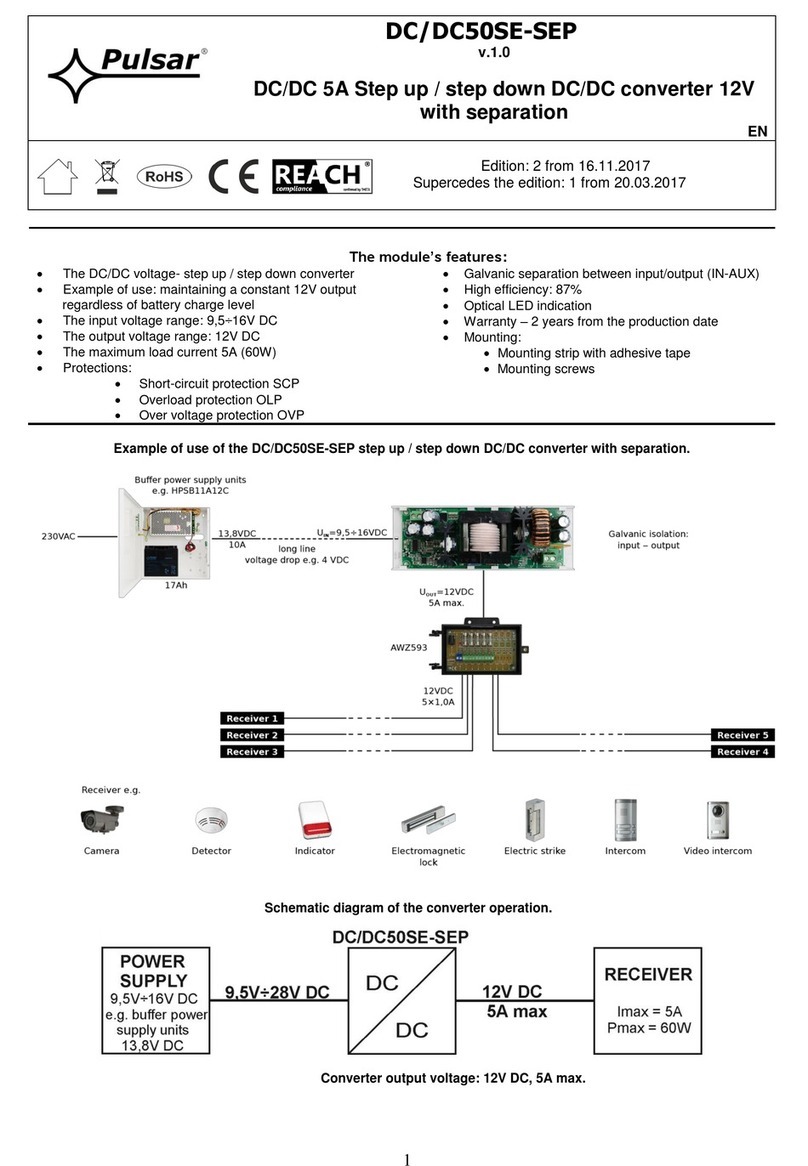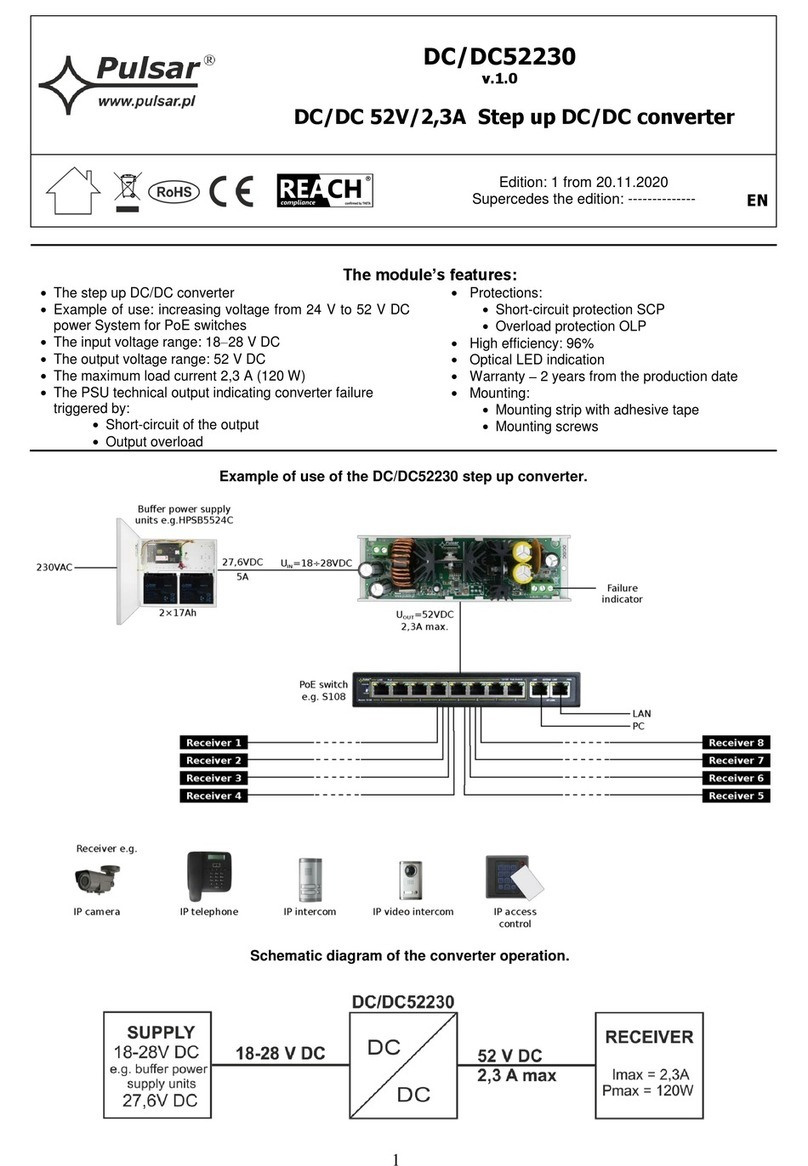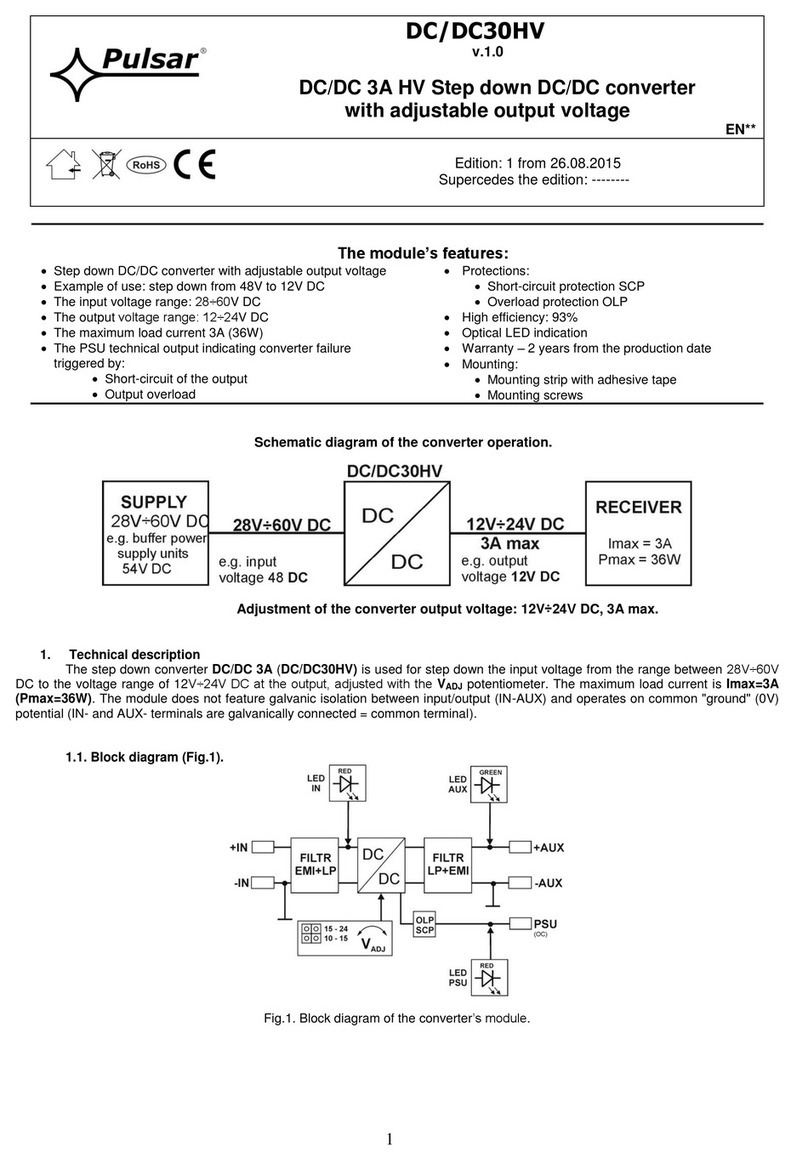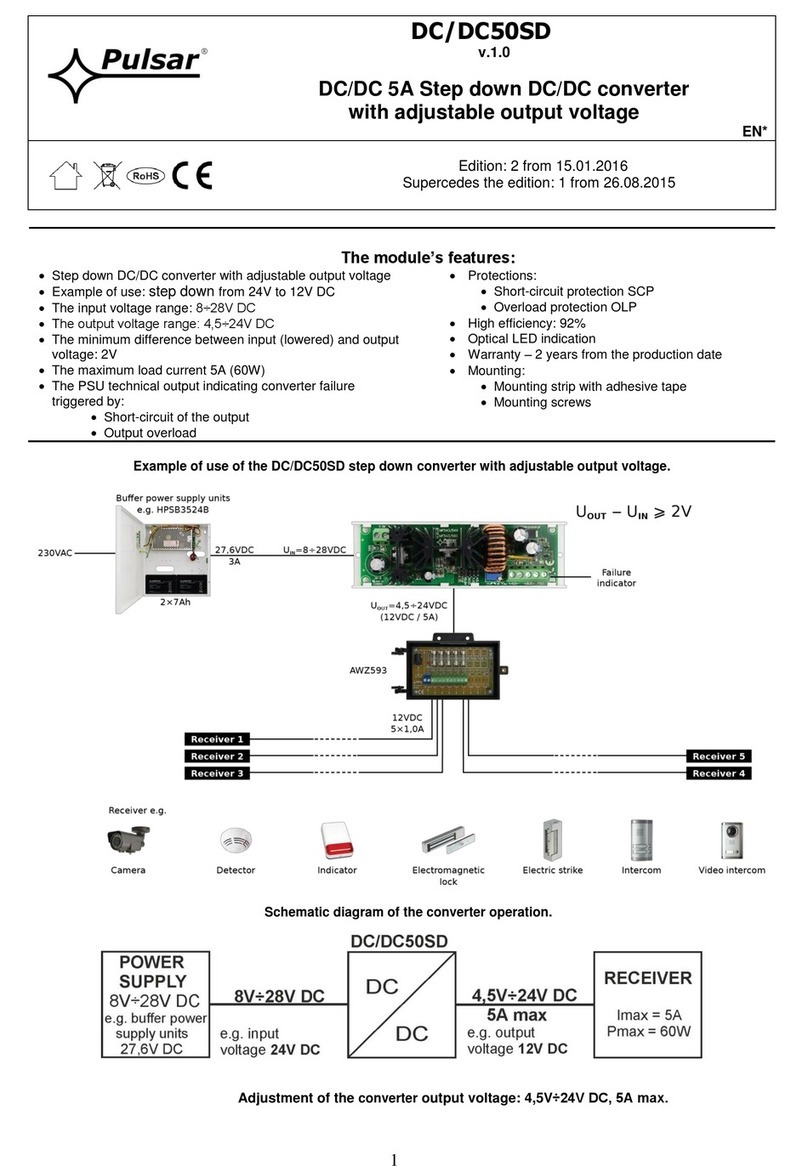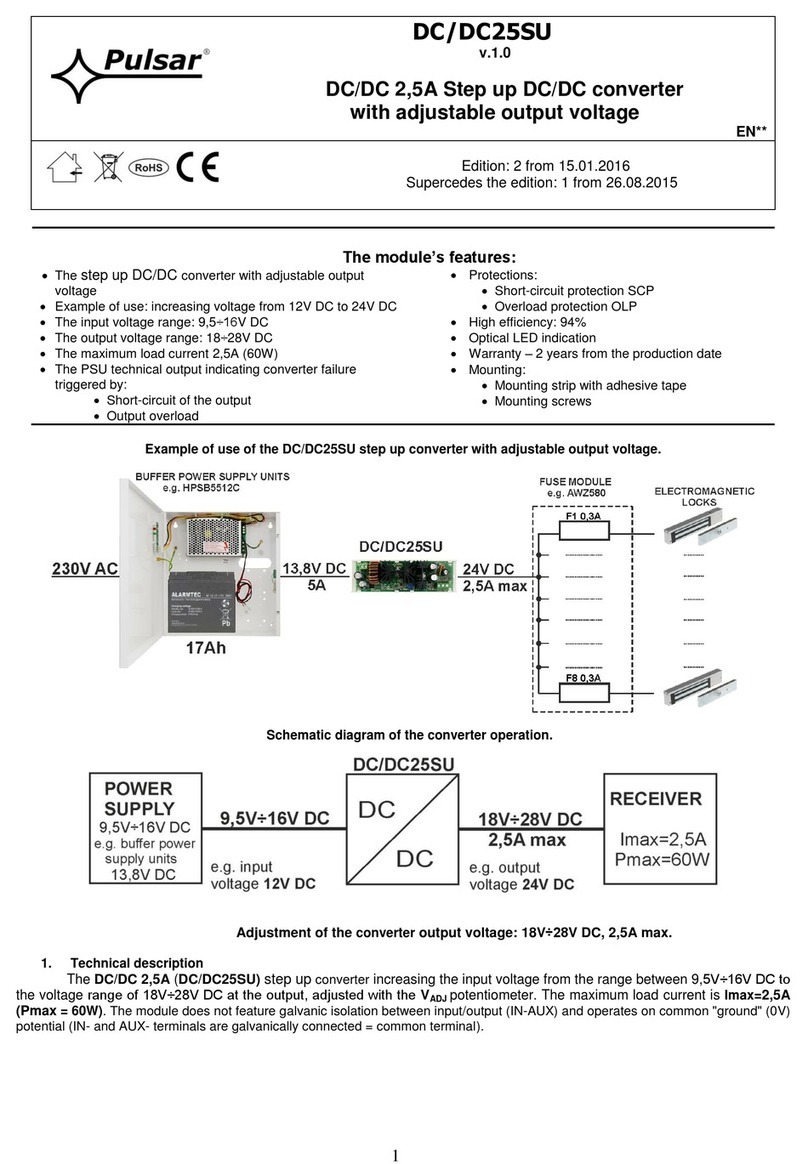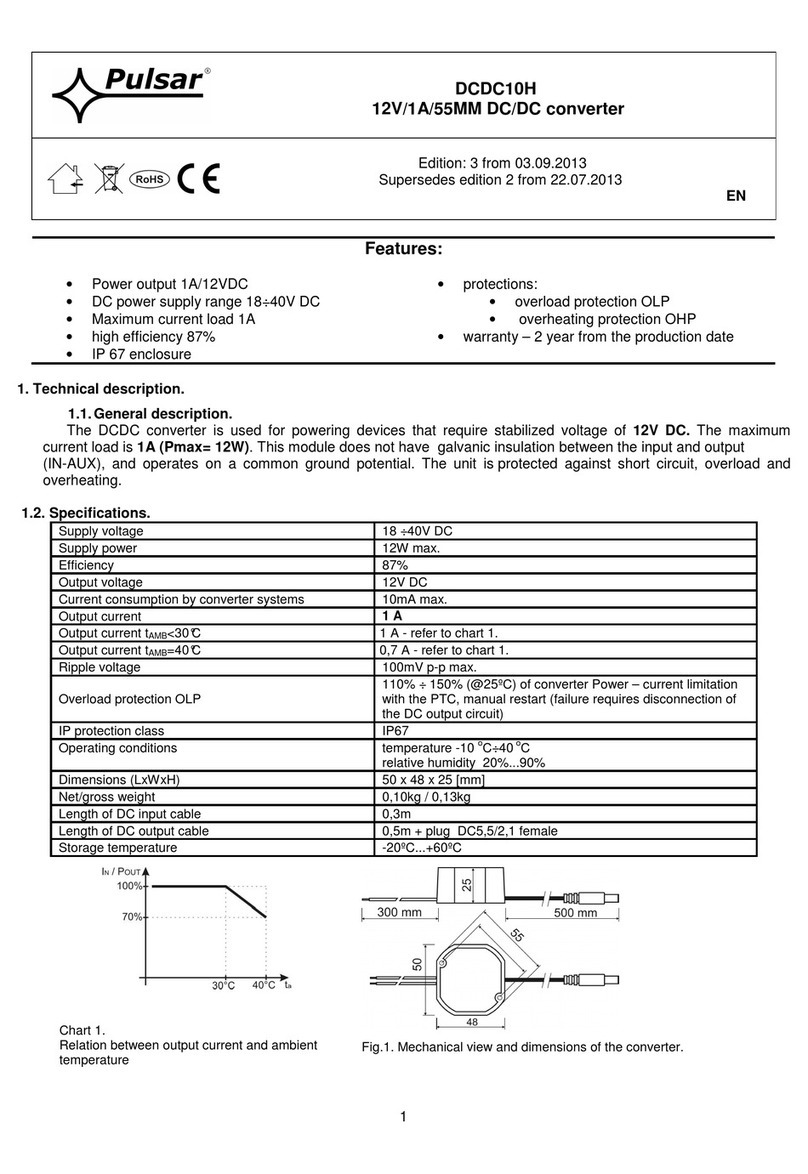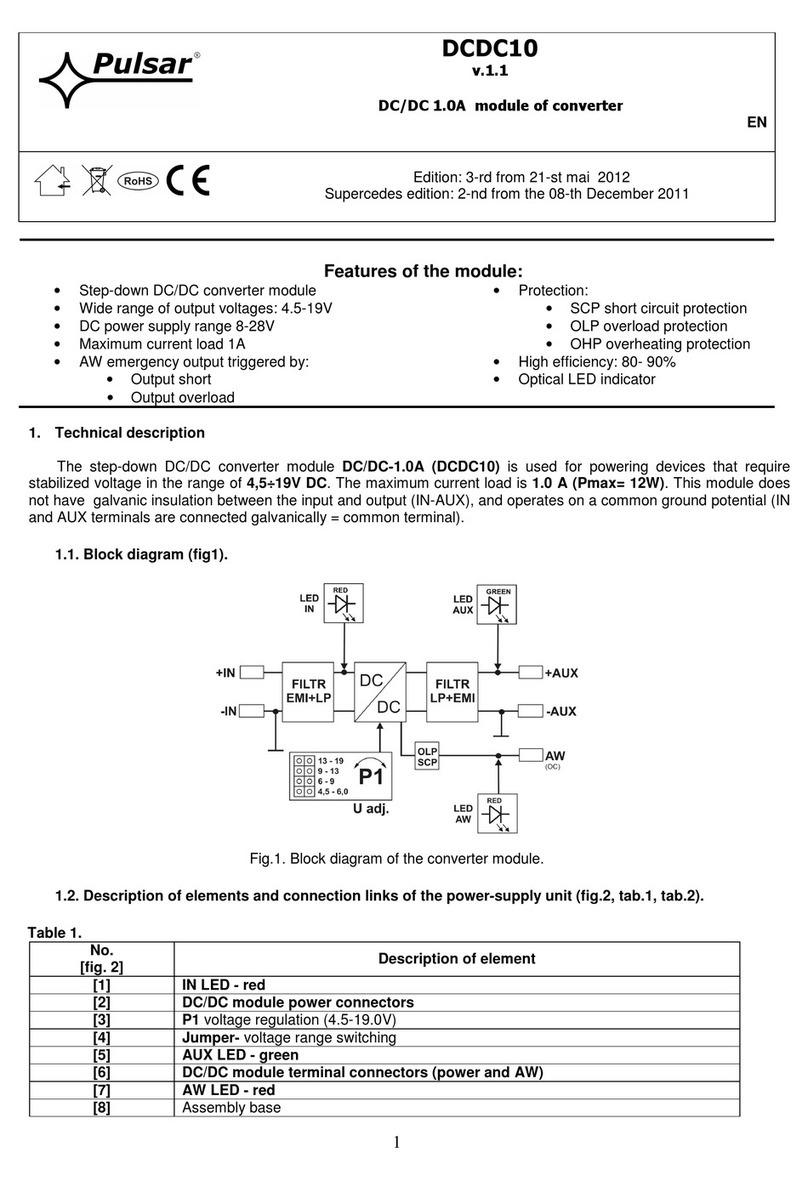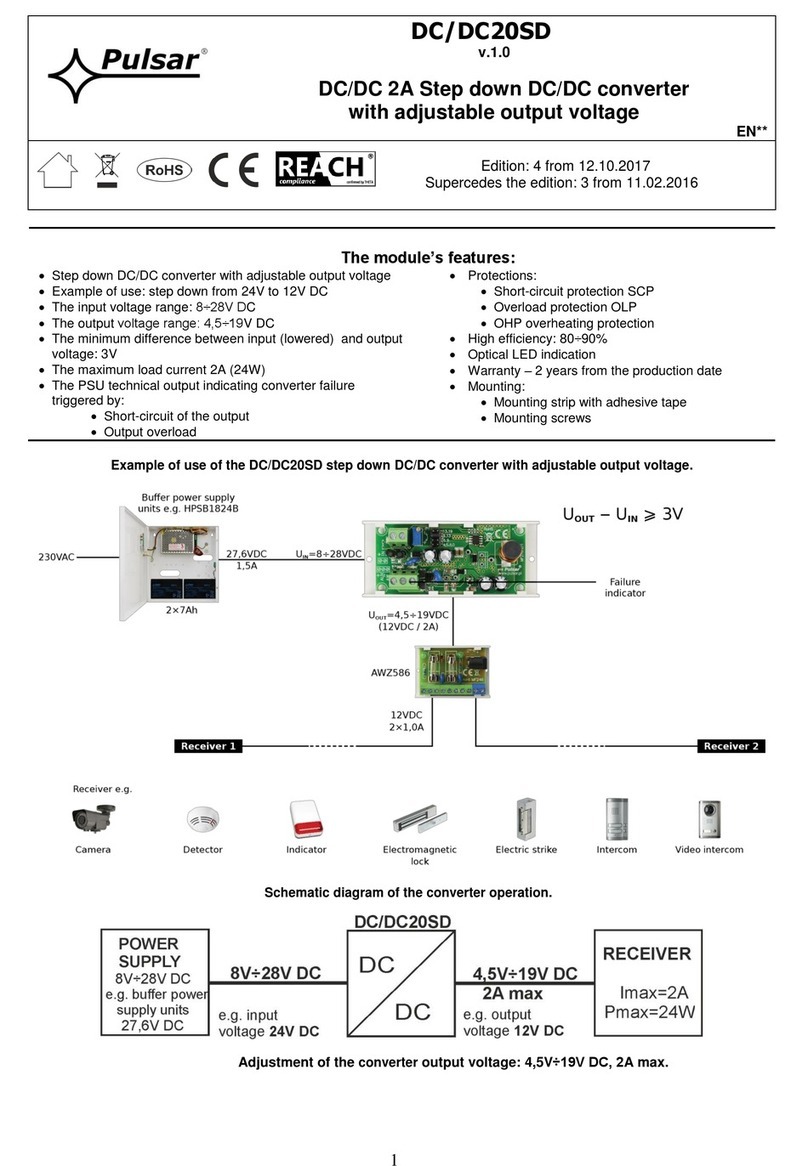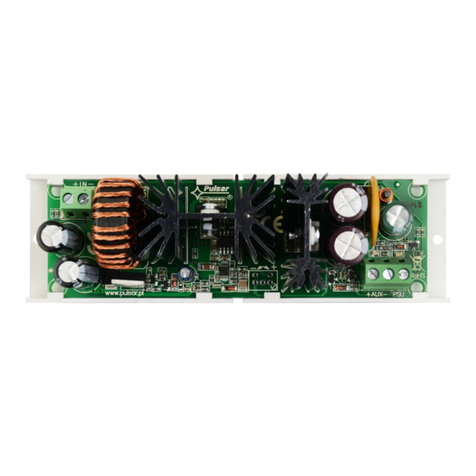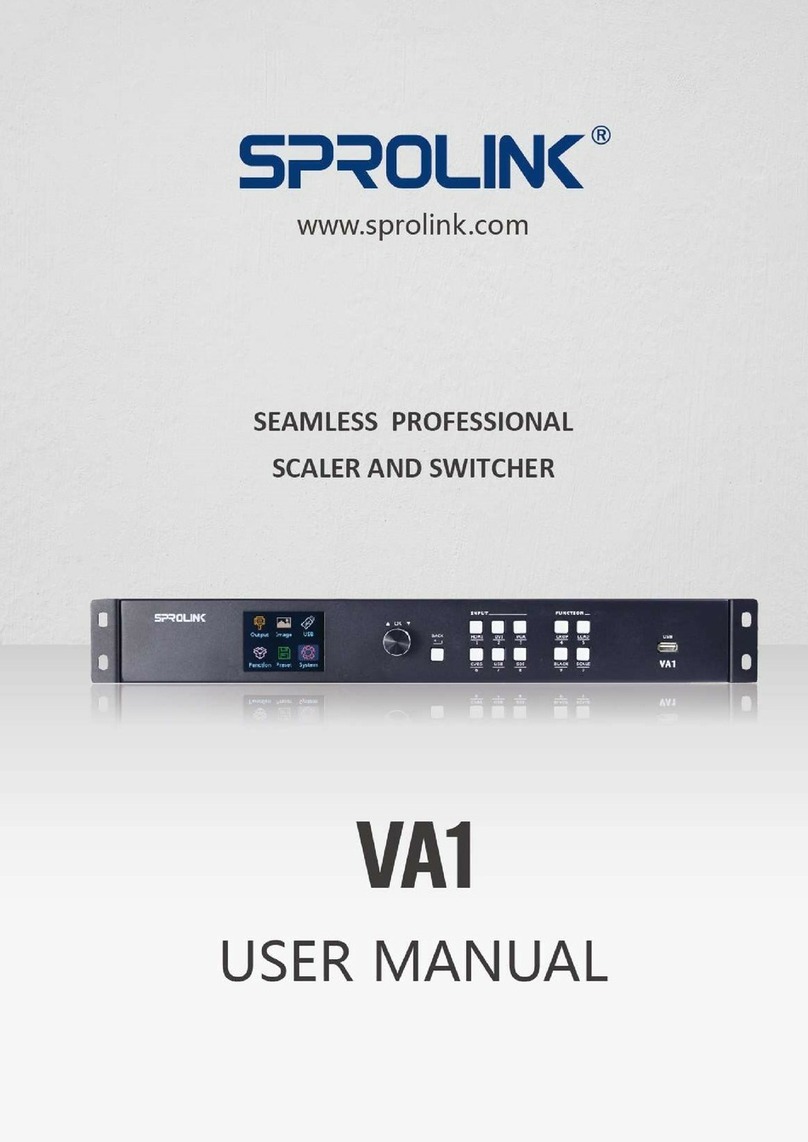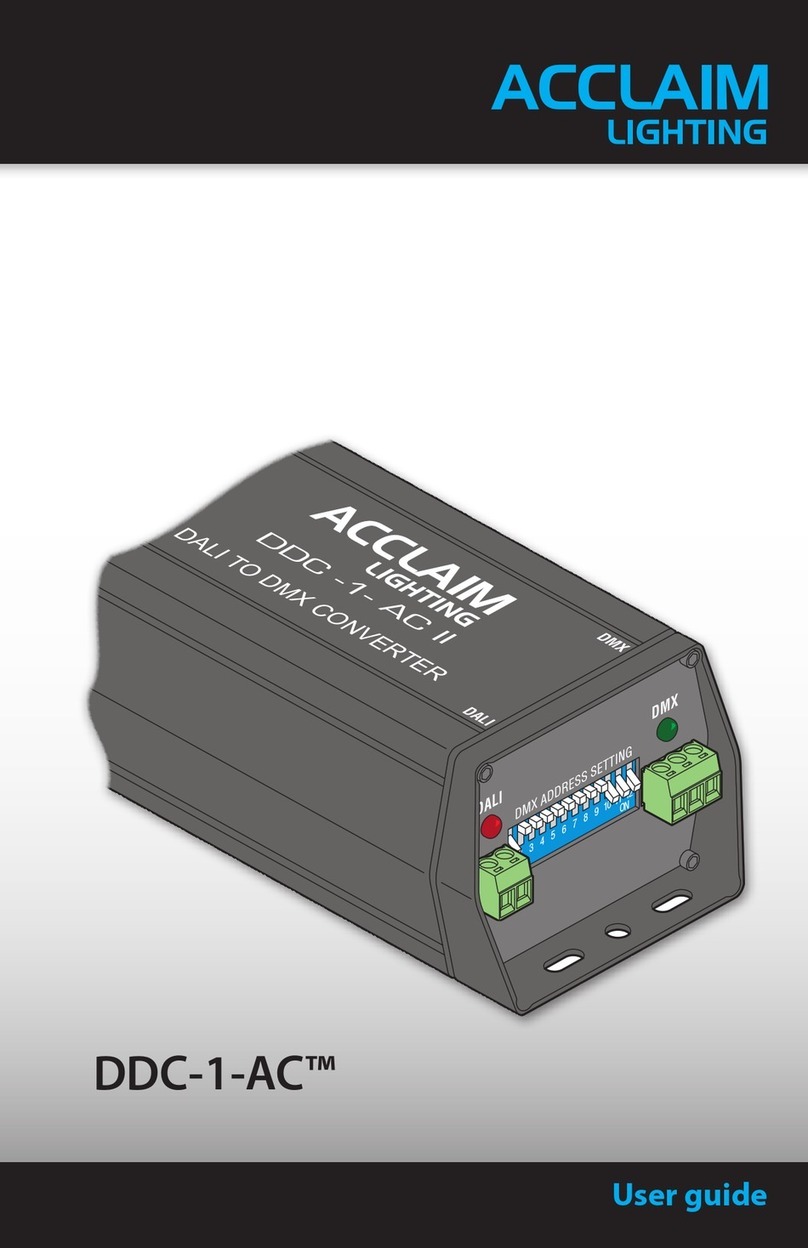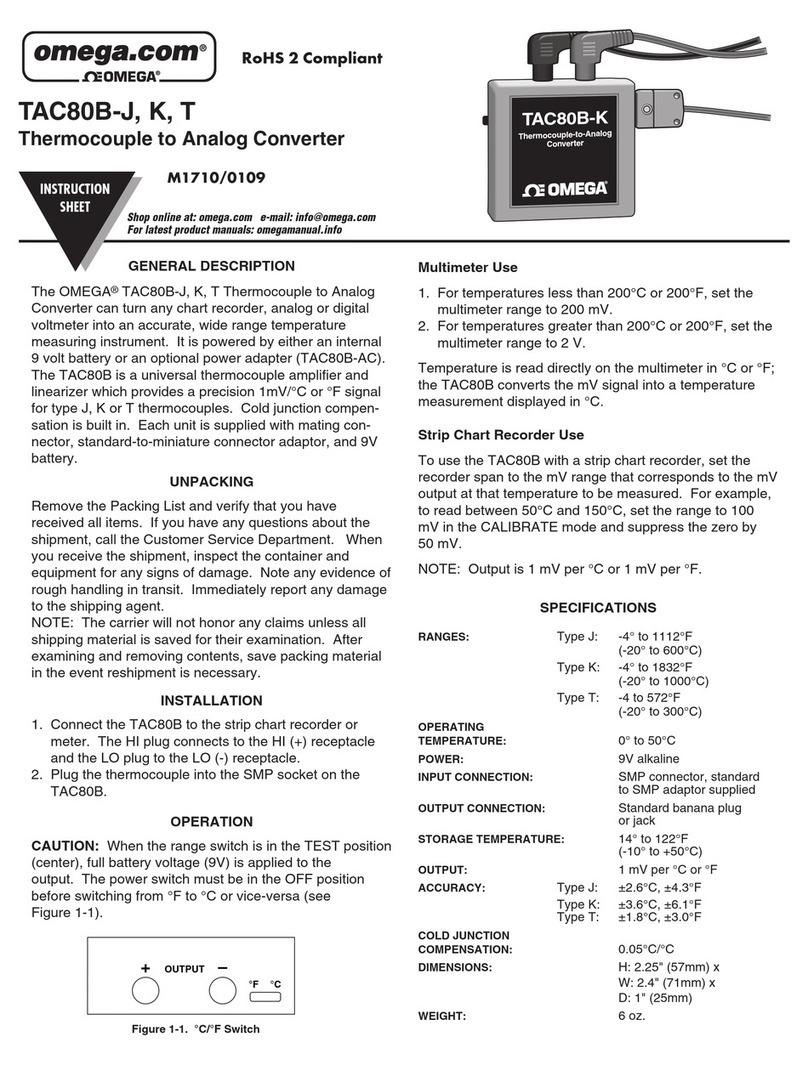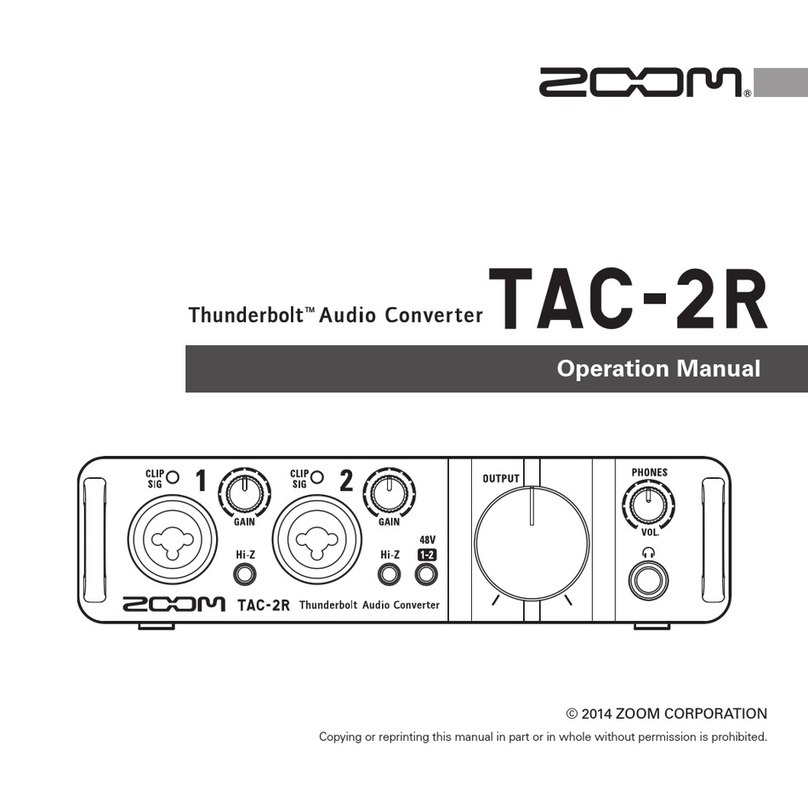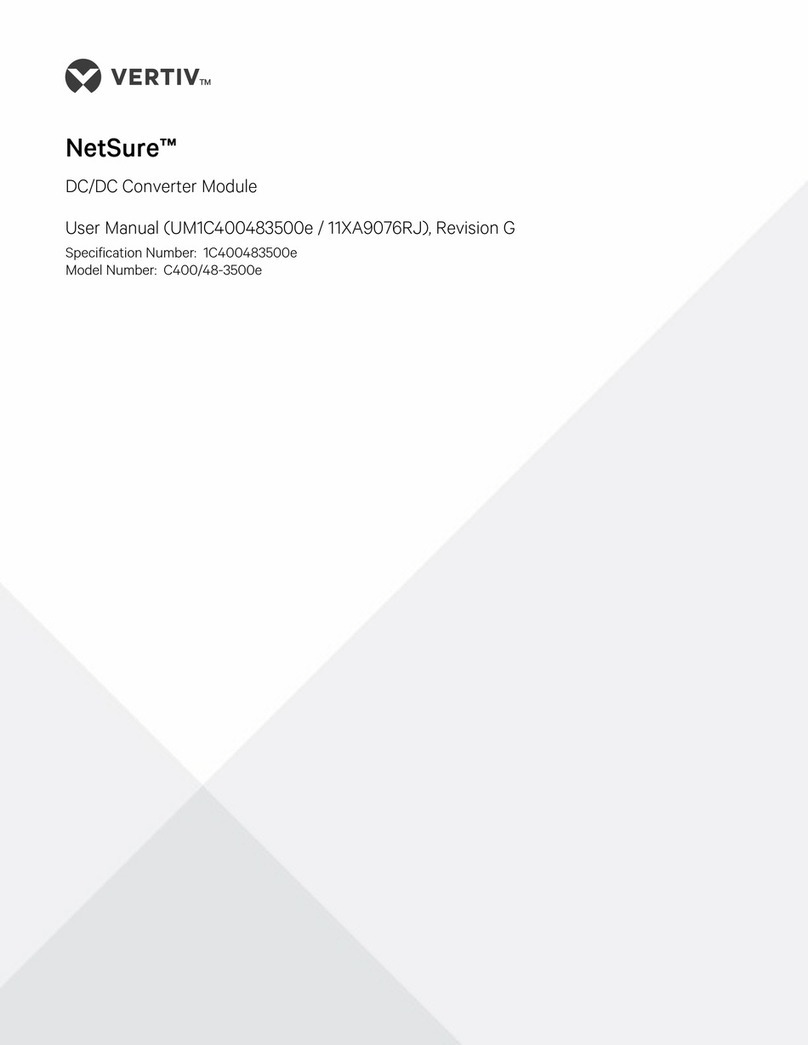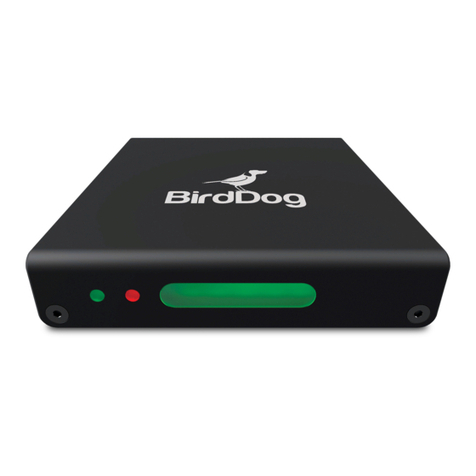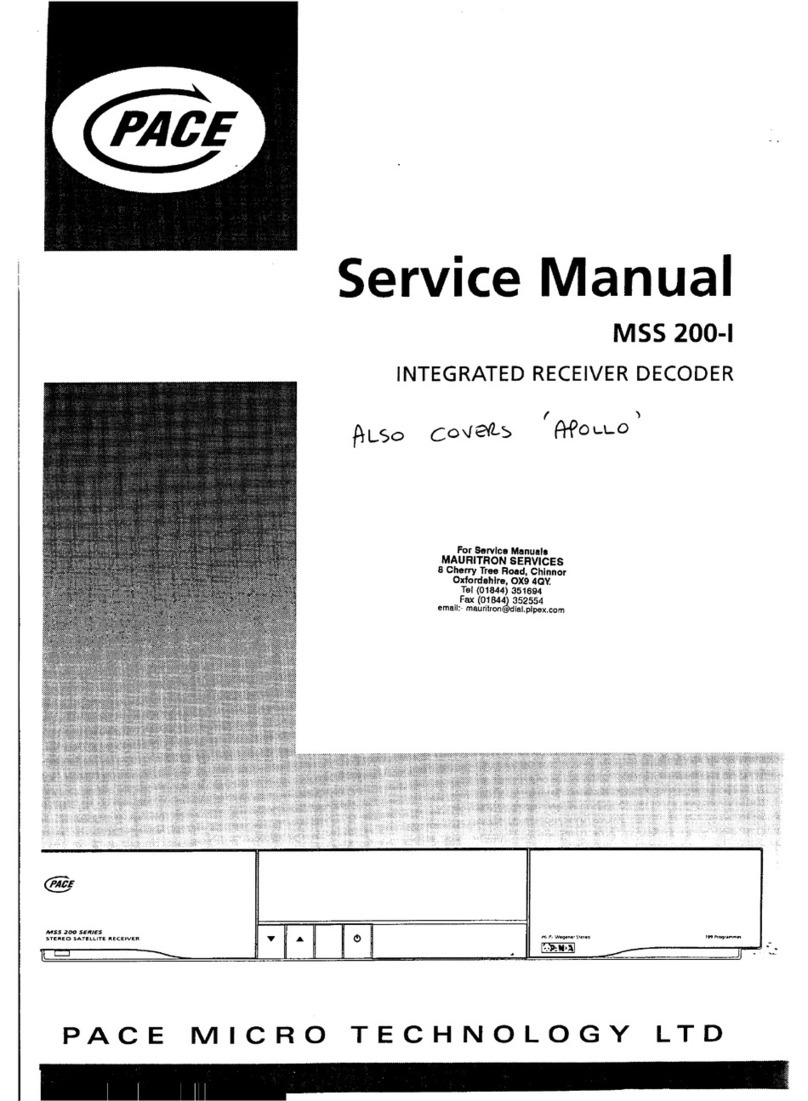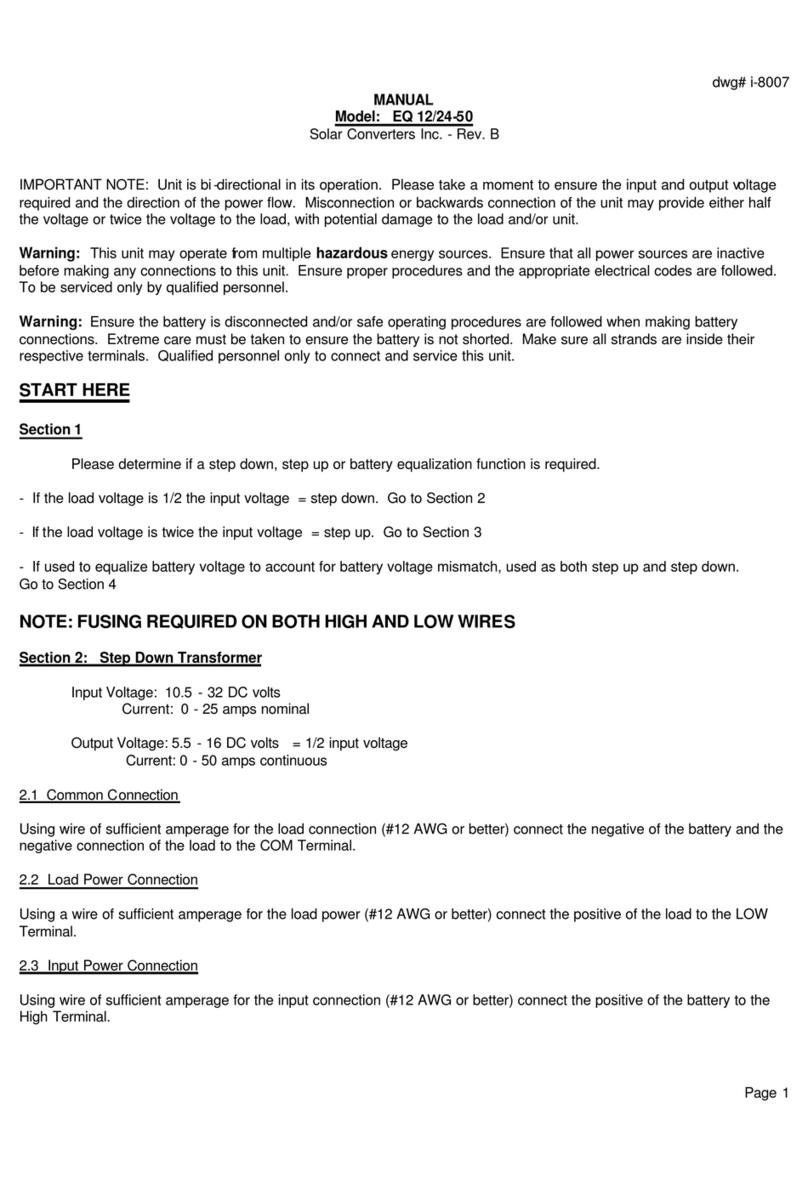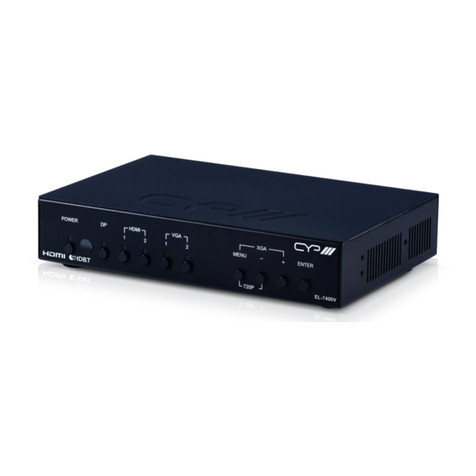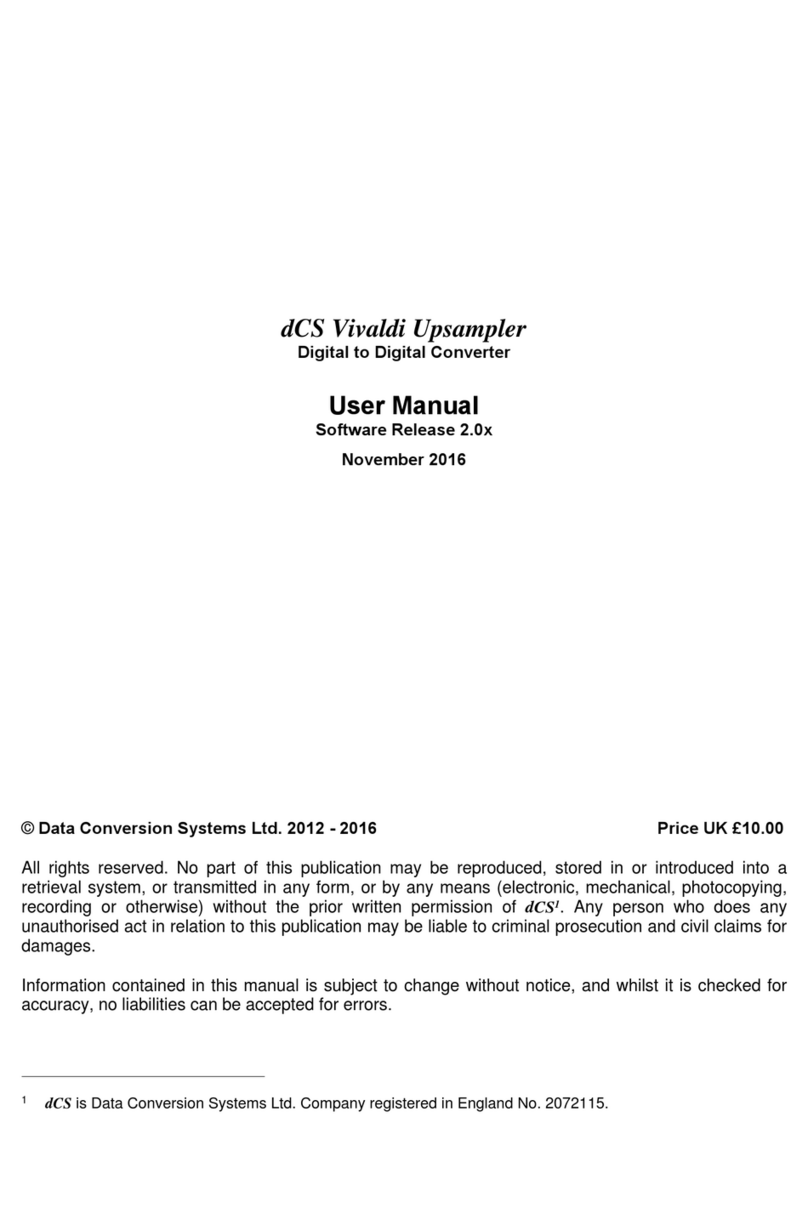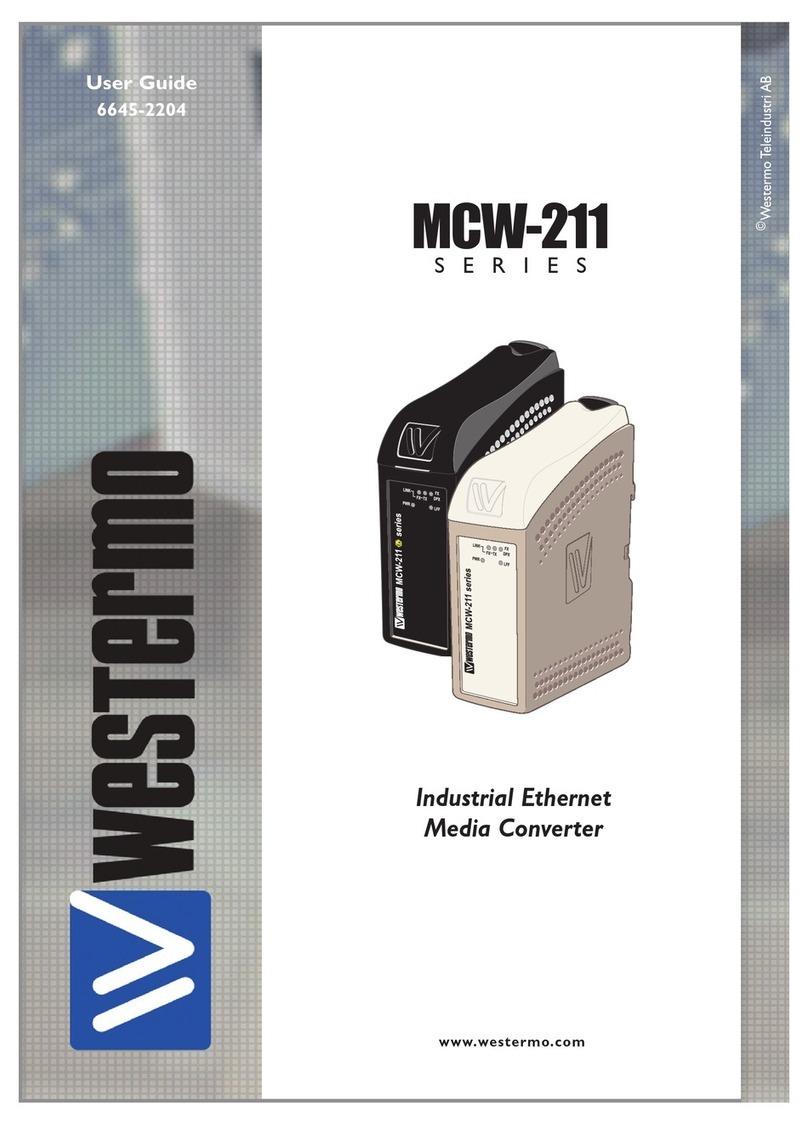
3. Converter 's module operation indication.
3.1. Technical output.
The converter is equipped with three diodes indicating operation status: IN, AUX, and AW.
IN- red LED: during normal status (DC power supply) it is lit continuously. No DC supply is indicated by switching off the IN LED.
AUX- green LED: indicates DC supply status at the module’s output. During normal status, it is lit continuously, in case of short
circuit or overload the AUX led is off.
AW- red LED: indicates module’s overload. During normal status, it is off, in case of short circuit or overload the LED lights
continuously.
3.2. Technical output.
The converter is fitted with one technical output indicating failure of the DC / DC module.
AW- OLP/SCP (overload/short-circuit) output: - OC type output indicating overload/short-circuit of the module’s output.
During normal operation, the output is shorted to the AUX - (0V). In case of failure, the module disconnects the output and it is in the hi-
Z (high impedance) state during failure.
4. Maintenance and operation.
4.1. Converter overload.
The module construction is based on the modern DC/DC converter system (step-down). It features a complete short-circuit
(SCP), overload (OLP) and overheat (OHP) protection. In case of a fault or an overload of the AUX output, an automatic isolation of
output voltage occurs that is indicated by the AW LED and the AW output. After a fault or an overload is eliminated, voltage at the AUX
output recovers automatically (the module does not require reset).
5. Maintenance.
All maintenance procedures can be performed after disconnecting the converter from the power network. The converter does
not require any specific maintenance; however, its interior should be cleaned with compressed air if used in dusty conditions.
WEEE LABEL
Waste electrical and electronic equipment must not be disposed of with normal household waste.
According to the European Union WEEE Directive, waste electrical and electronic equipment should
be disposed of separately from normal household waste.
GENERAL WARRANTY CONDITIONS
1. Pulsar (manufacturer) grants a two-years quality warranty for the equipment, starting from the production date.
2. The warranty includes free-of-charge repair or replacement with an appropriate equivalent (selected by the manufacturer) if the
malfunction is due to the manufacturer. It includes manufacturing or material defects, provided that such defects have been
reported within the warranty period (point.1).
3. The equipment subjected to warranty should be brought to the place of purchase or directly to the main office of the
manufacturer.
4. The warranty applies to complete equipment, accompanied by a properly filled warranty claim with a description of the defect.
5. Should the claim be accepted, the manufacturer is obliged to provide warranty repairs, at the earliest convenience, however not
later that within 14 days from the delivery to the service centre of the manufacturer.
6. The repair period mentioned in point 5 may be prolonged, if there are no technical possibilities to carry out the repairs, or if the
equipment has been conditionally accepted, due to the breaking warranty terms by the claimant.
7. All the services are carried out at the service centre of the manufacturer, exclusively.
8. The warranty does not cover the defects of the equipment, resulting from:
- reasons beyond the manufacturer's control,
- mechanical damage,
- improper storage and transport,
- use that violates the operation manual or equipment’s intended use
- fortuitous events, including lightning discharges, power failures, fire, flood, high temperatures and chemical agents,
- improper installation and configuration (failure to follow instruction).
9. The warranty is void in case of construction changes and repairs carried out by any unauthorized service center or in case of
damage or modifications to warranty stickers and serial numbers.
10. The liability of the manufacturer towards the buyer is limited to the value of the equipment determined according to the
wholesale prices suggested by the manufacturer on the day of purchase.
11. The manufacturer takes no responsibility for the defects that result from the damaging, malfunctioning or inability to operate
the equipment especially when resulting from failure to comply with the recommendations and requirements contained in the
manual.
Pulsar
Siedlec 150, 32-744 Łapczyca, Poland
Tel. (+48) 14-610-19-40, Fax. (+48) 14-610-19-50
e-mail: biuro@pulsar.pl, sales@pulsar.pl
http:// www.pulsar.pl, www.zasilacze.pl
